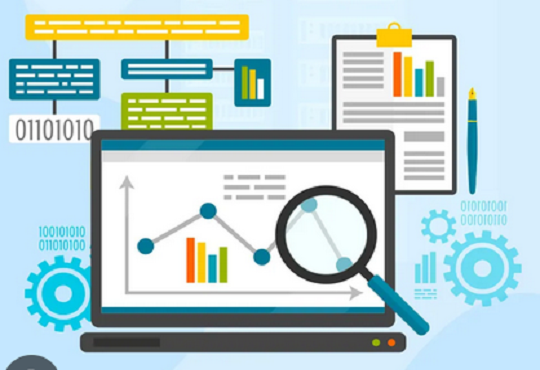Leveraging Data Analytics to Optimize Sales Funnel Performance
Janifha Evangeline | Sunday, 30 July 2023, 19:05 IST

Businesses that consider data analysis to be a crucial component of decision-making are about 19 times more likely to be profitable. Additionally, 54% of companies that use marketing analytics solutions see earnings that are higher than normal. An analytical-centric strategy has been shown to be one of the most crucial components of any business functioning since it offers such a wide range of potential for profitability. Analytics aid in predicting future business trends as well as improving a company's performance. You should be well informed of how such a strategy would benefit your company in the long term before choosing it. In this article we will look at how adopting an analytics-centric strategy and leveraging data analytics can boost sales and optimize the sales funnel performance of organizations.
Renders better user experience & customer service
Any business' capacity to generate a profit depends on its ability to satisfy its customers. The audience's demographics, age, interests, requirements, worries, and questions are revealed by data analytics. This aids in creating concepts for brand-new goods and services.
Analyzing audience data and paying close attention to consumer wants will allow you to personalize your offerings to their specific needs. Additionally, it improves customer retention rates and fosters long-lasting relationships with your clients.
Perform operations efficiently & enhances decision making
By using figures and stats to analyze your business, you may acquire a thorough understanding of where you stand right now. It helps you comprehend the demands of the team as well as the areas in which your system falls short. This aids in task management so that mistakes and blunders from the past are avoided.
Business data analytics offers insightful information on the effectiveness of your content and marketing. This aids in raising the standard of the campaigns and selecting the appropriate audience. Additionally, less time is spent focusing on tasks that are unrelated to the interests of potential clients.
An organization can make better, more profitable judgments with the use of an effective data analysis methodology. It helps to acquire insights into all facets of a business, whether it's selecting the type of content for marketing campaigns or creating a new product that appeals to the target market. A methodical technique also gets rid of physical labor and risk of human error.
Radically improves lead generation
As businesses employ rich data sets to find the right consumer at the right time, analytics is well-suited to enhancing the precision of lead generation and automating presales operations.
Many businesses already create extensive assessments of each market's sales potential using previous market data. By introducing lead-scoring algorithms based on in-depth and specific data sets about each of its prospects, some businesses are taking this farther. To create a "360 degree" image of the consumer, rich external data sources, are integrated with internal data sources on the client's prior history. Then, based on their predictions, these algorithms can inform sales strategy about the variables that actually influence lead conversion.
Thanks to the combination of these improved predictive insights and intelligent automation, businesses are seeing a leap in their ability to recognise opportunities and turn them into profits. Numerous companies are trying AI-enabled customer service representatives that use predictive analytics and natural language processing to automate early lead-generation chores including responding to basic client inquiries and managing the first presales inquiries. In addition to being significantly more efficient than traditional approaches, these algorithms can also identify the most promising prospects and decide the optimum time to get in touch with them.
Maximizes customer lifetime value
To match solutions to specific consumer needs, organisations with vast product portfolios may find it difficult. Although salespeople often follow simple decision-making procedures, this nonetheless calls for lengthy dialogues and usually results in the loss of opportunities to market related goods.
Many B2B businesses are employing next-product-to-buy algorithms that rely on information about the purchases made by consumers who are similar to them. In order to find cross-sell chances among its customer base, a logistics business researched previous ordering patterns, and then it created customized micro campaigns around those opportunities. For its experimental goods, the company increased revenues by a factor of five just by finding underserved customers.
The strategy aids in customer retention as well. Recognizing the symptoms of customer unhappiness prior to their taking action is necessary for engaging customers who are at risk of switching to a rival. These kinds of issues are ideal for machine-learning algorithms' capacity for pattern recognition. For instance, a large chemical company's marketing analytics team sought to lower SME customer attrition. The group developed a prediction model using more than 30 different variables and came up with ten main elements that turned customers away. It also discovered, to its dismay, that its top 15% of consumers were actually three times more likely to make a purchase elsewhere than the rest of its clientele. Another important discovery was that a customer was less likely to depart if they had more items. Cross-selling was important and a more effective way to increase consumer loyalty than price increases. Each regional sales manager quickly discovered a list of customers who were at risk on his or her desk, along with instructions on how to interact with each one to maintain their loyalty. With this information at its disposal, the business cut churn by 25%.
It is imperative for firms to adopt an analytics-centric strategy if they want to remain competitive for an extended period of time. Though moving your company in the direction of an analytical-centric strategy is a difficult and time-consuming process, data analytics always supports good decision-making, regardless of the industry.




